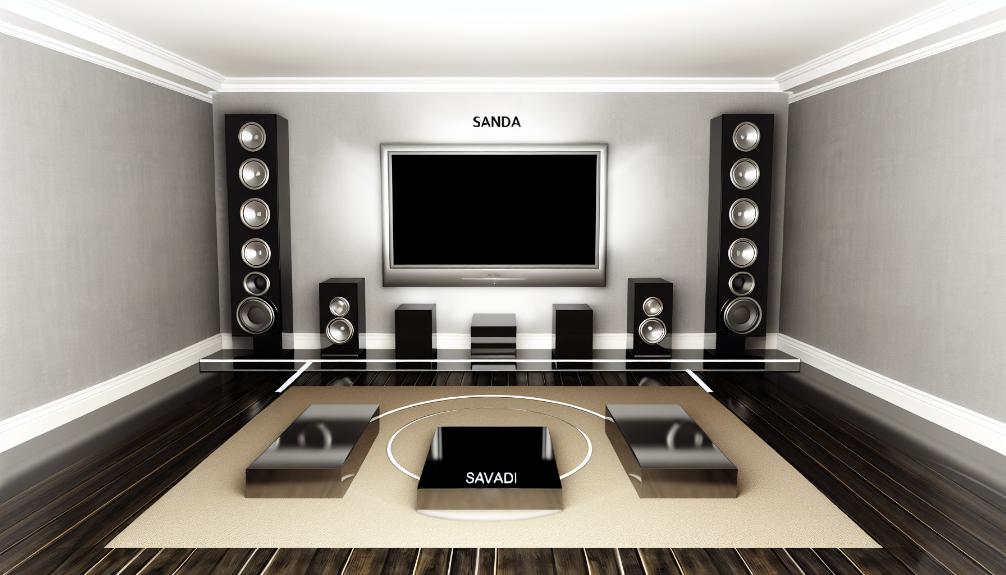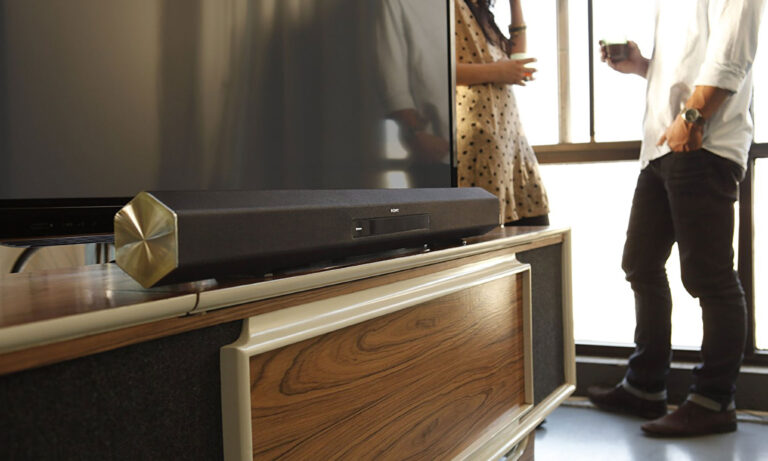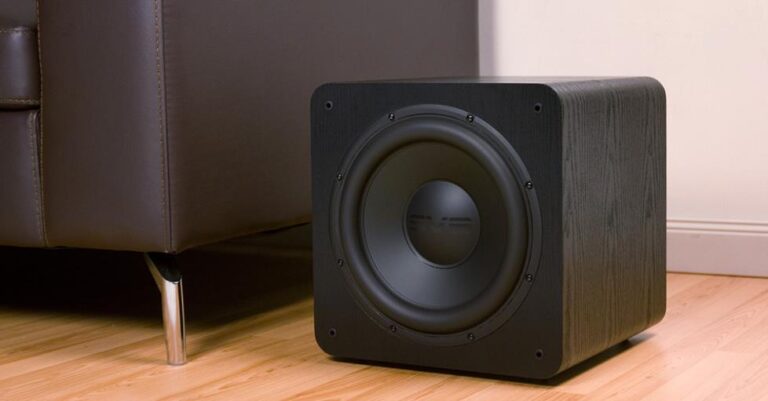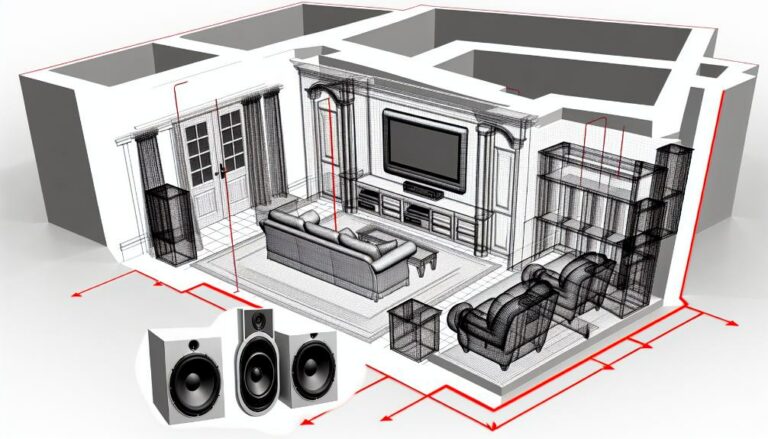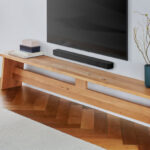In the realm of home entertainment, a quality sound system is integral to creating an immersive and enjoyable experience. The cornerstone of this system is, undoubtedly, the speakers.
But what constitutes a good home theater speaker? What features and specifications should an informed consumer look for?
The answers to these questions are not straightforward, as they depend on a myriad of factors that vary from one individual to another.
Let us embark on a journey to uncover these answers and, in doing so, help you make an informed decision when it comes to selecting the perfect speakers for your unique home theater setup.
Key Takeaways
- Speaker placement significantly influences acoustic output and the overall sound experience.
- Quality speakers should have speaker materials such as polypropylene, aluminum, or kevlar for the cone and a cabinet made from dense materials like MDF or solid wood.
- Different types of home theater speakers, such as floor-standing speakers, bookshelf speakers, subwoofers, center channel speakers, and satellite speakers, offer various benefits and sound capabilities.
- Room acoustics, including factors such as room size, shape, materials, and speaker placement, play a significant role in speaker selection and overall sound quality.
Understanding Home Theater Speakers
Delving into the intricacies of home theater speakers, it becomes evident that a comprehensive understanding of their types, functionalities, and installation processes is paramount for optimizing sound quality. A key aspect of this understanding pertains to speaker placement, which significantly influences the acoustic output.
Speaker placement, for instance, plays a crucial role in achieving accurate localization of sound, which contributes to a more immersive auditory experience. Speakers should be strategically positioned to create an ideal listening environment. Typically, the center speaker is placed directly in front of the listener, while the left and right speakers are positioned at an angle.
Meanwhile, surround speakers are generally situated to the side or behind the listener to create a sense of spatial depth.
However, speaker placement alone cannot guarantee optimal sound quality. Acoustic factors, such as the room’s size, shape, and furnishings, also come into play. Certain materials can absorb or reflect sound waves, which can positively or negatively affect the overall sound experience. It is, therefore, essential to consider these acoustic factors in conjunction with speaker placement when setting up a home theater system.
This holistic approach ensures a harmonious blend of sound, creating a truly immersive audiovisual experience.
Key Features of Quality Speakers
Transitioning into the realm of speaker quality, it becomes imperative to highlight the key features that distinguish high-performing home theater speakers from their less stellar counterparts.
Two fundamental aspects that significantly contribute to speaker performance are speaker materials and frequency response.
In terms of speaker materials, superior speakers typically utilize high-quality, robust materials for both the speaker cone and the cabinet. The cone, responsible for vibrating and producing sound, benefits from materials like polypropylene, aluminum, or kevlar, which offer a combination of lightweight and rigidity. The cabinet housing the speaker components should be made from dense materials such as MDF or solid wood to minimize resonance and distortion.
Frequency response, on the other hand, refers to the range of frequencies a speaker can reproduce accurately. An ideal speaker should have a wide frequency response, reproducing both high and low frequencies with equal proficiency. This ensures a balanced sound output, encompassing the full spectrum of human hearing from the deepest bass notes to the highest trebles.
Types of Home Theater Speakers
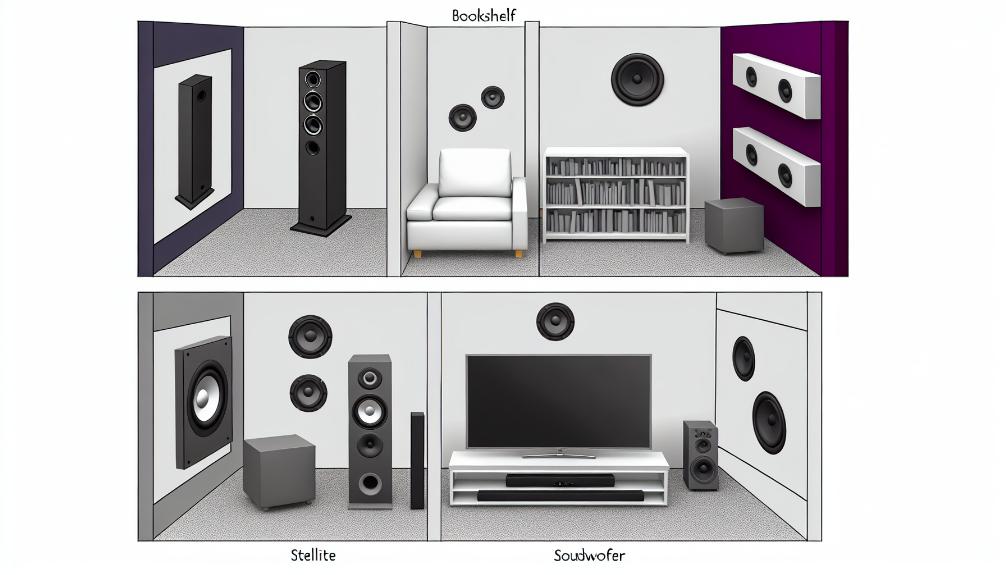
In the vast landscape of home theater audio, there are several distinct types of speakers, each with unique characteristics and roles within a surround sound setup. This array includes floor-standing speakers, bookshelf speakers, subwoofers, center channel speakers, and satellite speakers.
Floor-standing speakers, the largest type, offer a broad range and high power handling. Conversely, bookshelf speakers are compact and designed for smaller spaces but still deliver a balanced sound. Subwoofers produce low-frequency sounds, contributing to a rich, full audio experience. Center channel speakers handle dialogue and deliver it clearly, while satellite speakers, often small and mounted, provide an immersive, multi-directional experience.
The Speaker Placement Impact is significant as it directly influences the sound experience. For instance, subwoofers are best placed in room corners to maximize bass, while satellite speakers should be positioned at ear level for optimal surround sound.
Over the years, the surround sound evolution has progressed dramatically, with technology pivoting from mono to stereo and eventually to multi-channel systems. These advancements have led to the creation of various speaker types, each contributing uniquely to producing high-quality home theater audio. Understanding these types and their roles is essential to creating an optimum home theater setup.
Choosing Speakers for Your Space
Having examined the various types of home theater speakers and their roles, we now turn our attention to the critical process of selecting the ideal speakers for your specific space.
The first aspect to consider is room acoustics. This refers to how sound waves behave in a particular environment. Factors such as room size, shape, and materials can significantly impact the sound quality. For instance, carpeted rooms tend to absorb more sound than those with hardwood floors, affecting the perceived volume and clarity. Hence, understanding your room’s acoustics can guide your choice of speakers and their capabilities.
Speaker placement is another key factor. The position of speakers can influence sound distribution and create an immersive experience. For example, in a 5.1 surround sound setup, the central speaker should ideally be placed in line with the television, while the two front speakers should be angled towards the seating area, and the two rear speakers should be placed behind the listener.
Ultimately, the selection should harmonize with your space and usage needs. Consider professional assistance if necessary to ensure optimal setup. Knowledgeably choosing your home theater speakers with room acoustics and speaker placement in mind not only enhances the audio experience but also increases the overall enjoyment of your home entertainment system.
Top Rated Home Theater Speakers
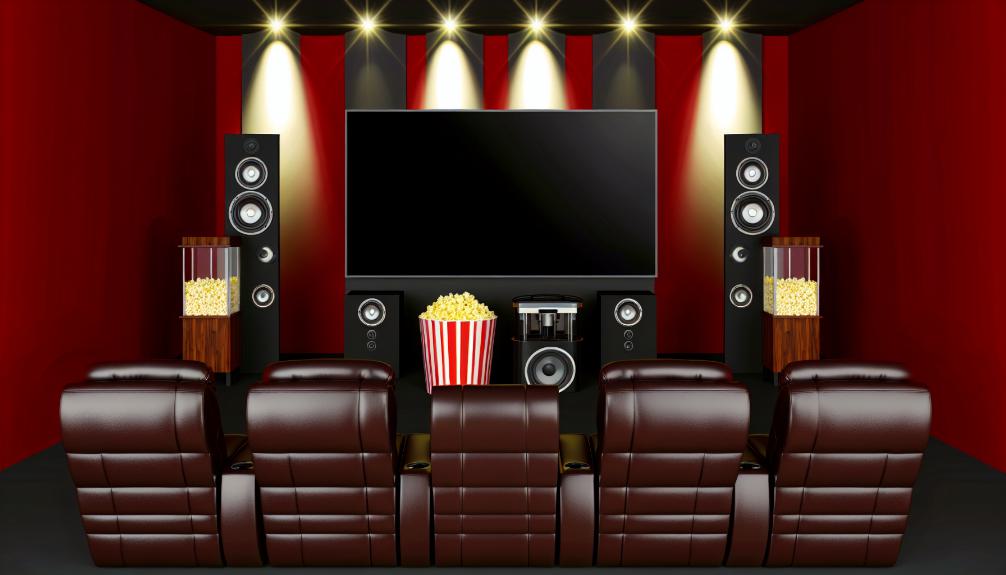
When it comes to top-rated home theater speakers, several stand out due to their exceptional audio quality, design aesthetics, and innovative features that significantly enhance the home entertainment experience.
These top-performing speakers are not only superior but also score high on speaker durability and budget considerations. Thus, they offer an excellent blend of value and performance, satisfying both audiophiles and casual listeners alike.
The top-rated home theater speakers include:
Klipsch RP-8000F

The Klipsch RP-8000F is a floor-standing speaker that delivers powerful, cinematic sound using proprietary Tractrix® horn-loaded technology and dual 8″ copper spun cast woofers. It’s Dolby Atmos ready, allowing for an easy upgrade to make your home feel like a movie theater.
- Proprietary Tractrix® horn-loaded technology
- Dual 8″ copper spun cast woofers
- Dolby Atmos ready
- MDF cabinet with scratch-resistant, textured wood grain vinyl
- Seamless integration into any decor
KEF LS50 Meta

The compact KEF LS50 Meta bookshelf speaker uses Metamaterial Absorption Technology to ensure a pure, natural sound by absorbing 99% of unwanted sound from the rear of the driver. It also features KEF’s patented Uni-Q driver array for an immersive listening experience.
- Metamaterial Absorption Technology
- Absorbs 99% of unwanted sound
- Patented Uni-Q driver array
- Immersive listening experience
ELAC Debut 2.0 B6.2

The ELAC Debut 2.0 B6.2 bookshelf speaker offers clear, room-filling sound with its custom-engineered drivers and robust cabinet design. It features a 6.5-inch Aramid-Fiber woofer and 1-inch cloth dome tweeter, delivering a well-rounded sound profile.
- Custom-engineered drivers
- Robust cabinet design
- 6.5-inch Aramid-Fiber woofer
- 1-inch cloth dome tweeter
SVS Prime Tower

The SVS Prime Tower is a floor-standing speaker that provides an immersive soundstage with its 1″ aluminum dome tweeter and dual 6.5″ woofers. Its innovative SoundMatch crossover ensures smooth transitions between drivers for a balanced, precise sound.
- 1″ aluminum dome tweeter
- Dual 6.5″ woofers
- SoundMatch crossover
- Precise, balanced sound
When choosing home theater speakers, one must weigh the aspects of audio quality, design aesthetics, and innovative features. However, speaker durability and budget considerations should not be overlooked.
These top-rated speakers reflect a harmonious balance of all these factors, ensuring a superior and immersive home entertainment experience.
Frequently Asked Questions
What Is the Average Lifespan of High-Quality Home Theater Speakers?
High-quality home theater speakers, subject to proper speaker placement and compatible audio formats usage, typically have a lifespan of 10-20 years. However, this can extend with regular maintenance and careful use.
How Can I Maintain and Clean My Home Theater Speakers to Ensure They Last Longer?
Proper speaker placement is vital for optimal sound quality and longevity. Regular cleaning to prevent dust accumulation is essential, as dust can impact speaker performance over time and potentially damage internal components.
Is It Possible to Connect Home Theater Speakers to Other Devices, Such as Gaming Consoles or Computers?
Yes, it is possible to connect home theater speakers to gaming consoles and computers. Speaker compatibility and console connection largely depend on the type of interfaces both the device and speakers have, such as HDMI, optical, or USB.
What Are Some Common Issues or Problems One Might Encounter With Home Theater Speakers?
Common issues with home theater speakers often include improper speaker calibration, resulting in unbalanced sound, and audio interference, potentially caused by other electronic devices, which can disrupt the audio quality and overall home theater experience.

